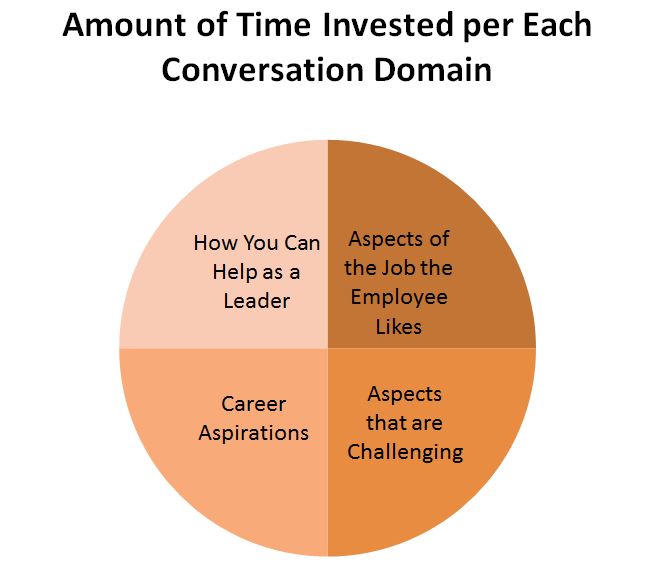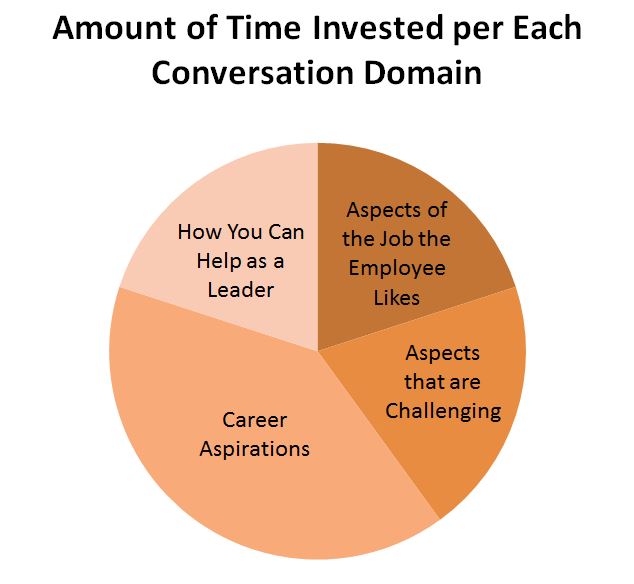As a leader, how effective are the one-to-one career conversations you have with your employees? If you’re thinking “what career conversations?” you might be setting the HR department up for its next round of exit interviews. Don’t feed the exit interview beast; use “stay interviews” instead. You can learn more about the concept of stay interviews in my Smartblog on Leadership post, Top talent walking out the door? Here’s how to get them to stay.
Here’s a bit of bonus content to help support you in crafting a plan for stay interview. I call it “Conversation Domains” and it goes like this:
When you plan out your conversation, instead of thinking about it in a linear fashion (first, we’ll talk about ABC and then we’ll talk about DEF), consider grouping your conversation starters/questions in categories, or “conversation domains.” For example, if you are planning a career development conversation with your team member Joan, who has reported to you for two years, four possible domains might be:
– Aspects of the Job Joan Likes
– Aspects of the Job that are Challenging for Joan
– Joan’s Career Aspirations
– How You as Joan’s Leader Can Help
After you have settled on your domains, you can then create open-ended questions for each domain, such as, “Joan tell me the type of things that excite you about your job” and “Joan, what would you say is the most challenging aspect of your job?”
A point to consider: determine approximately how much time you want to invest exploring each domain. For example, do you want to talk about each domain more or less equally?
Or, do you anticipate that you’ll want to spend more time in a certain domain?
There is no right or wrong answer.
Structuring your conversation by domain has three benefits:
- Visualizing the conversation in this way helps you think about the most important questions to ask.
- If you hit a conversational tangent, you’ll be more easily able to refocus the conversation back to one of the domains.
- You can track the conversation and determine if you’ve invested enough time in each domain before moving on.
What do you think? Would this format work for you? Try it and let me know how it worked for you.
A discussion question: how else might you use this format for mapping important career conversations with your team members?


Leave a Reply